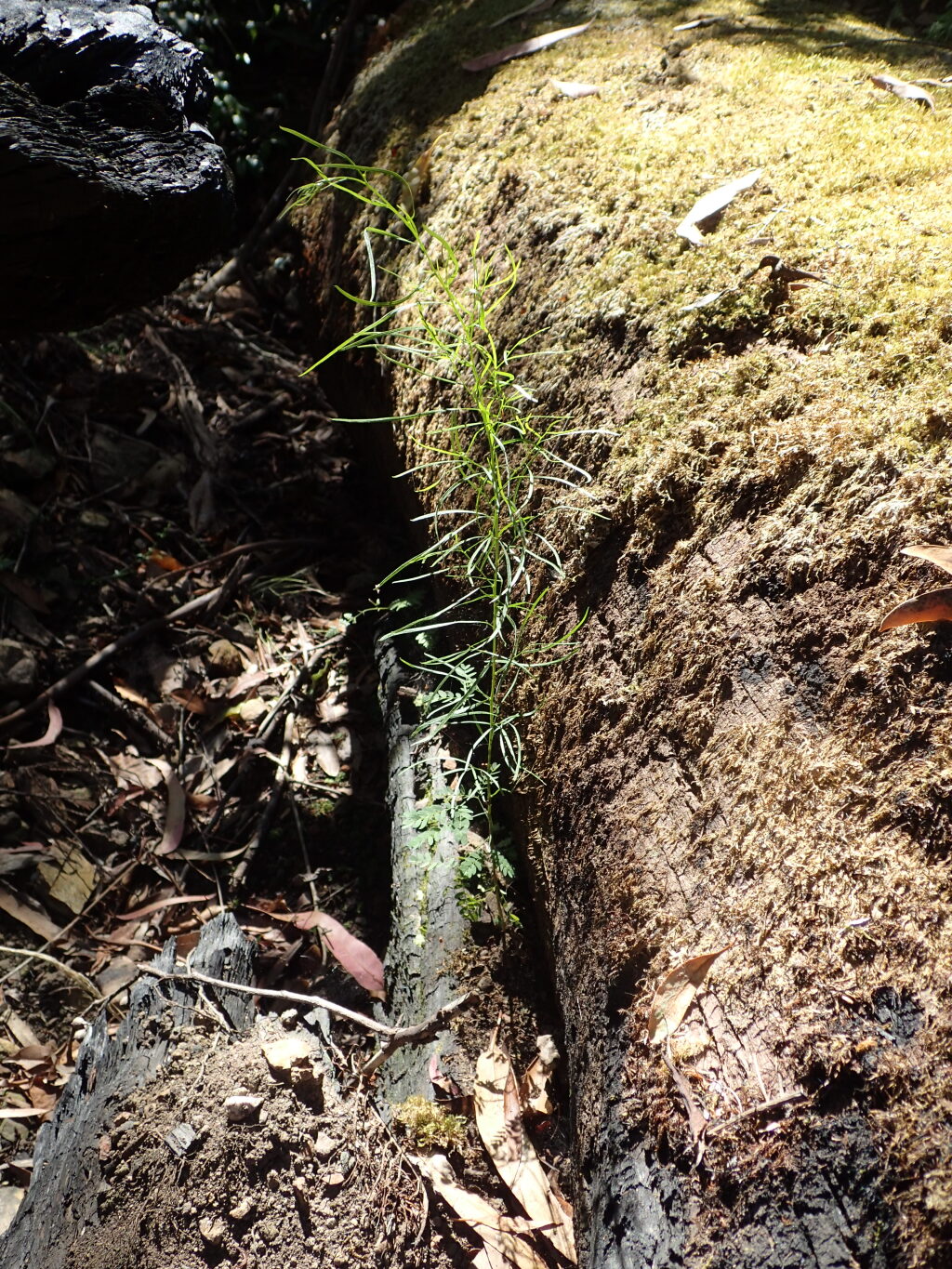Acacia cognata
Domin Narrow-leaf Bower-wattleShrub or tree, 3–10 m high, often viscid; branchlets willowy and arching to pendulous, commonly glabrous with longitudinal resinous bands alternating with green to brown ribs. Phyllodes narrowly linear-elliptic, usually 5–10 cm long and 1–3.5 mm wide, thin, dark green to yellowish-green, resinous-punctate, glabrous except margins which typically have antrorse, minute hairs; veins normally 3, with midrib clearly the most prominent, lateral veins few, obscure and occasionally anastamosing. Peduncles 2 per axil, normally 3–9.5 mm long, sometimes with appressed, minute hairs, basal bract persistent; heads globular, 4–5 mm diam., 10–17-flowered, pale lemon-yellow. Flowers 5-merous; sepals almost fully united. Pods linear, to 10 cm long, 2–4 mm wide, chartaceous, glabrous; seeds longitudinal, oblong, 4–4.5 mm long, dull, dark brown, aril terminal. Flowers Sep.–Nov.
VVP, GipP, CVU, EGL, EGU, HSF, HFE. Also NSW. Occurs on the coastal plain and adjacent foothills of the Great Dividing Range from near Nowra in New South Wales to near Orbost. It grows in moist gullies and on hillsides in lowland sclerophyll forest on sandstone and in soils derived from granite. Frequently cultivated and an occasional escape into nearby forest (e.g. Arthurs Seat National Park). A pre-1900 collection from Hawkesdale in south-west Victoria is likely to have incorrect locality details.
The number of main veins varies because the more or less longitudinal secondary veins sometimes coalesce to form weaker, secondary veins.
Closely allied to Acacia subporosa which has less pendulous branches and branchlets, broader phyllodes with more veins per face, commonly longer peduncles and heads larger, with more flowers. A member of the Acacia verniciflua complex and sometimes confused with Acacia stictophylla.
Entwisle, T.J.; Maslin, B.R.; Cowan, R.S.; Court, A.B. (1996). Mimosaceae. In: Walsh, N.G.; Entwisle, T.J., Flora of Victoria Vol. 3, Dicotyledons Winteraceae to Myrtaceae, pp. 585–658. Inkata Press, Melbourne.
 Spinning
Spinning

